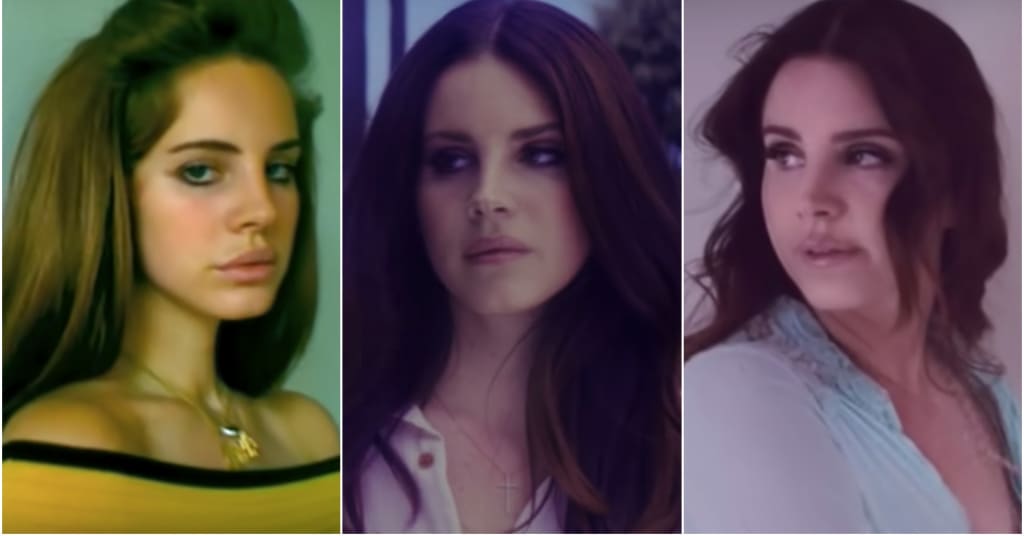


Though “Born to Die” and “Paradise” were all over the place in terms of tonal direction, the stagnation of “Ultraviolence” could have borrowed just a tad from Del Rey’s earlier, punchier sound. Individually, the songs are worthy of a second listen, but put together they are worthy of a snooze fest, so much so that by the third track, it is hard to tell that any real transition has taken place between each song. However, the album still doesn’t get it quite right as it commits to that sound a little too much.

Unlike “Born to Die” and “Paradise,” “Ultraviolence” commits to the sound it wants – a moody, desolate and mystical sound that captures a sense of loneliness and loss. The repetitiveness blends the songs together, leaving no room for variation.Īs a whole, “Ultraviolence” provides a cohesiveness in mood that was lacking in Del Rey’s previous albums. Though beautifully composed, the songs in “Ultraviolence” never move past the slow-paced, melancholy lyricism and sultry vocals.
Above all, the title track sounds like a lament for a doomed relationship. The song seems to address the complexity of human relationships – recognizing that an individual is not good for you, but at the same time being unable to let go of the relationship because of your love for that person. “Jim raised me up/ He hurt me but it felt like true love/ Jim taught me that/ Loving him was never enough,” she sings against raw piano and strings. On the title track, “Ultraviolence,” Del Rey continues this theme by addressing the conditions surrounding a toxic relationship. Reminiscent of a vintage ballad, “The Other Woman” features Del Ray singing, “He finds her waiting like a lonesome queen/ Cause to be by her side/ It’s such a change from old routine/ But the other woman will always cry herself to sleep/ The other woman will never have his love to keep.” The subtle quiver in Del Rey’s voice against a bluesy saxophone instantly transports listeners to an old Hollywood film.ĭel Rey uses slow tempos and sultry vocals to accompany what seems to be a dominant theme throughout “Ultraviolence” – evoking a sense of yearning for something better and lamentation for what once was. The track elicits a sense of isolation that develops as a result of falling for the wrong person, as she sings, “His bonnie on the side, bonnie on the side/ Makes me a sad, sad girl.” Similarly, on a later track, “The Other Woman,” Del Rey elaborates on the more obvious downsides of being the other woman in someone else’s relationship. In “Sad Girl,” Del Rey touches on the issue of infidelity. More than anything, “Ultraviolence” gives listeners an in-depth understanding of the “mess” Del Rey is talking about – the kind of mess that transpires from continuously encountering the less tasteful side of life. But in Del Rey’s case, it is the kind of heartbreak that comes from toxic relationships, drug use and a rather disheartening experience with fame. “Ultraviolence” is an exploration of the complexity of heartbreak and human relationships – not the sappy kind that makes you want to clear out an aisle of Ben & Jerry’s ice cream at the grocery store. “Everyone knows that I’m a mess, I’m crazy,” Del Rey sings on the opening track titled, “Cruel World.” The song features Del Rey’s seductive vocals and a back-to-basics rock ‘n’ roll aesthetic that serves as a proper introduction to the kind of album that “Ultraviolence” is. Rather than singing about Diet Mountain Dew and how people need to love her because her music is playing on the radio, themes found in “Born to Die,” Del Rey opts for more cryptic lyricism – singing about drugs, falling for all the wrong men and being the other woman. The third studio album by the songstress, “Ultraviolence” ditches the pop, upbeat energy of her previous albums, “Born to Die” and “Paradise,” for a more moody and mystical taste. Leaning against the open door of a vintage car on the cover of her latest album, Lana Del Rey evokes a sense of melancholy and lonely sentiments that reflects the songs of “Ultraviolence.”


 0 kommentar(er)
0 kommentar(er)
